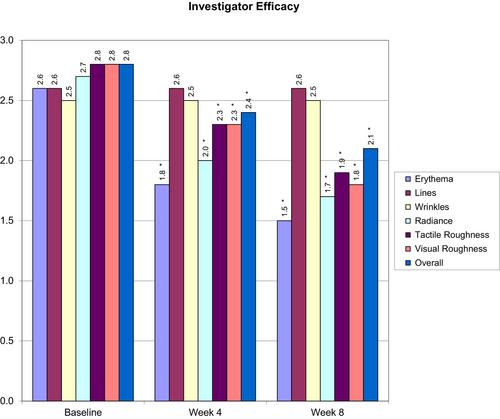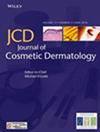The Clinical Efficacy of Lapachol in Facial Redness Reduction
Abstract
Background
Facial erythema from acne, vascular rosacea, or photoaging is a common difficult–to-treat dermatologic challenge.
Objective
The objective of this study was to examine the role of lapachol in alleviating facial erythema associated with a variety of common dermatologic conditions.
Methods
Twenty-five healthy female and male subjects 35–65 years of age of Fitzpatrick skin types I–II with mild-to-moderate stable facial erythema from acne, rosacea or photoaging were enrolled in a single-site monadic study. Subjects received the study cream for twice daily application and were assessed at baseline, Week 4, and Week 8. The dermatologist investigator and subjects assessed efficacy and tolerability and facial photographic images were taken of all subjects at each visit. Noninvasive erythema assessments of the face were conducted using a colorimeter at baseline, Week 4, and Week 8 to document improvement in facial erythema.
Results
Twenty-five out of 25 subjects successfully completed the study without tolerability issues including 12 subjects with rosacea, 6 subjects with photoaging and 7 subjects with acne. After 8 weeks of use, the investigator rated a 44% decrease in facial erythema while the subjects rated a 40% decrease. Facial erythema was also noninvasively assessed with a colorimeter and dermaspectrophotometer (DSP). There was a 26% decrease in skin redness at Week 4 and a 31% decrease in skin redness at Week 8 on the colorimeter L*a*b* scale. This finding was collaborated by the DSP which registered a 29% decrease on the erythema scale at Week 8.
Conclusion
Lapachol in a moisturizer formulation was found to be effective in reducing facial erythema from acne, rosacea, and photoaging.


 求助内容:
求助内容: 应助结果提醒方式:
应助结果提醒方式:


